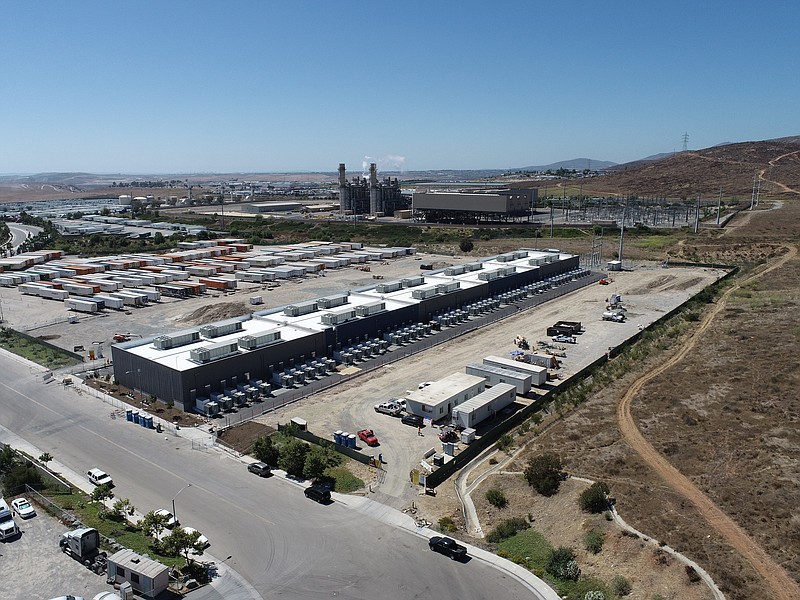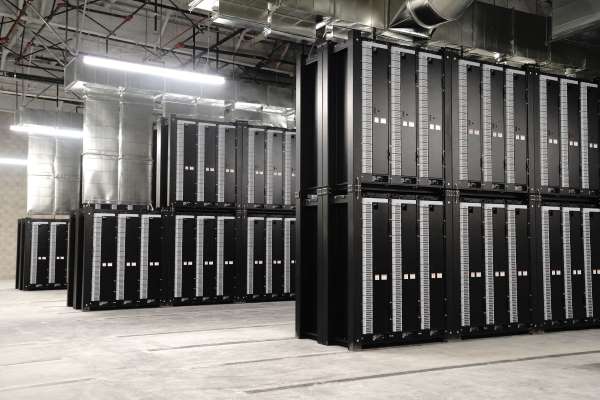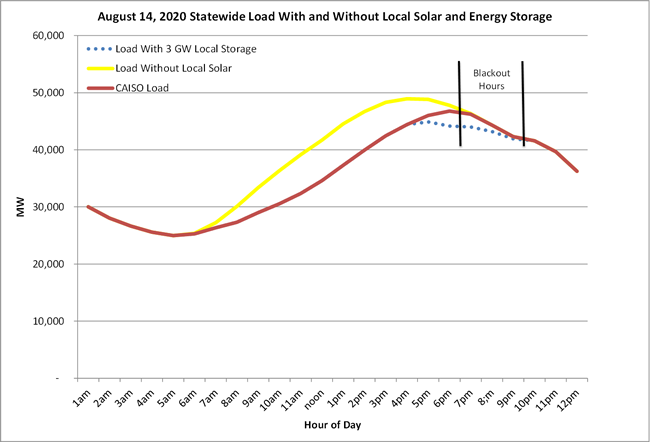Welcome to the
Run on Sun Monthly Newsletter

In this Issue: |
August, 2020
Volume: 11 Issue: 8
Building on a Legacy: Enphase Opens Ensemble to
|
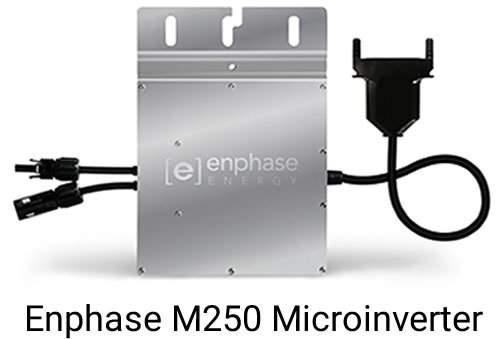 |
I remarked that given the relatively short window between when Ensemble was available for the IQ micros and when it will be available for the M-series, why not just say that they would be supported. The answer, it seems, is that in refining Ensemble, they realized that it would be easier than previously thought to fold in the M215/250's. This, of course, gives me hope that the S280's won't be far down the line. Squeak, squeak! |
Our next question concerned communications - the M-series micros communicate via Power Line Communications (PLC) via the neutral and hot conductors. The IQ-series does not bring a neutral to the roof, so it communicates PLC from hot to hot. How does this get resolved?
Turns out quite easily, assuming you have an Envoy-S, like the one on the right. So how do the IQ8 microinverters in Ensemble communicate with the Envoy? As it turns out, the same way that they do in an IQ system - via the add on Comm Kit that adds Zigbee capability to the Envoy-S. The even better news is that Comm Kit is part of every Ensemble Storage System, so there is no additional cost for M-series systems over IQ systems! Yay! (The Envoy-S will need a new software version, but that is a free download.)
|
Our next concern had to do with speed issues: the M-series micros just aren't anywhere near as computationally powerful as their IQ cousins. Would the seamless backup functionality promised with the IQ series still apply? Yes, we were assured. Cool! |
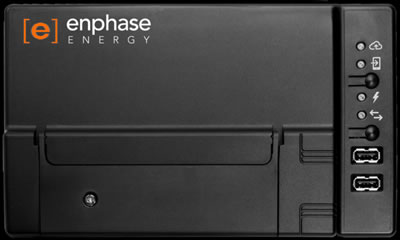
|
Which brought us to our final question: What ratio of legacy inverters to IQ8 inverters will be needed to allow the microgrid to operate? Recall that with the IQ series we are presently being told that the ratio is 1.5:1, that is, an Encharge 10, that has 12 IQ8 micros inside, can support up to 18 IQ 6 or 7 micros on the roof. (While we are hoping to see some movement on that front, that is the present design guidance.) So what will the ratio be for the M-series?
Great question - no precise answer as of yet, other than "it will be more restrictive." There is testing ongoing to establish precisely what those limits are, which is why the availability is being cited for December and not now. Obviously we will be following this closely and will update you when we know more, watch this space!
I want to thank Utsav Ghosh for being so responsive and generous with his time.
And I especially want to thank Enphase for responding to the cries of their clients in getting this much-needed functionality addressed. Great job, folks!
Now about those S280's...
“Ensemble would be able to support M215 and M250-based systems as of December…”
Get your copy of
Commercial Solar:
Step-by-Step
from
Run on Sun
Founder & CEO
Jim Jenal

Now available on Amazon.com
in both
Print & Kindle versions.
Commercial Solar:
Step-by-Step
from Run on Sun
Founder & CEO
Jim Jenal

Now available on Amazon.com
in both Print & Kindle versions.
Help Us Spread the News!


Utility Scale Battery Storage for the Win!EDITOR'S NOTE: This article written by the newest member of the Run on Sun Team, Sophia Mazurek! As energy storage becomes increasingly necessary for California residents, solar developers are pushing the bounds of backup battery systems.
LS Power has just created one of the largest battery systems in the world! The Gateway Energy Storage project was finalized and unveiled this year on August 19th in San Diego, California. The 250MW system will enhance California's grid reliability, according to the California Independent System Operator (CAISO). In addition, the project will greatly reduce energy costs and will contribute to California’s goals to meet clean energy demands.
So, what exactly does this mean for solar integration through the utility?Grid scale battery storage is a game changer in today's energy market. According to the National Renewable Energy Laboratory (NREL), battery storage is one of several technology options that can enhance power system flexibility and enable high levels of renewable energy integration. Large energy storage centers, like Gateway, can receive solar production from various sources across the gird network. When the energy comes in from a solar power plant, it can be stored in the batteries and later re-distributed to thousands of businesses and houses. This is a great way to connect the utility with large-scale solar production. Battery storage centers are opening the door for a renewable energy grid takeover. As we steer further away from fossil fuels, we will see a smoother transition into solar applicability. Powering cities with renewable energy is becoming feasible and inexpensive. Companies like LS power are paving the way for solar technology and accomplishing what we once thought was impossible through back up battery storage. And to think that some people don't believe you can run a 21st economy with renewables! |
Behind the Meter to the Rescue!EDITOR'S NOTE: This article makes an appropriate bookend to Sophia's! It's hot here in California, fry an egg on the sidewalk style hot, and the grid is feeling the heat. The California Independent System Operator (CAISO) - the entity responsible for managing the grid - has issued warnings about possible outages, and even our local utility, Pasadena Water & Power, sent out emails to customers warning that cutoffs might be necessary. The extreme conditions have prompted some extreme reactions, blaming the State's shift to more and more renewables as the cause of the problem. But overlooked in all of this is the contribution of local solar power systems, "behind the meter," that have greatly improved the present situation, and with more aggressive utilization of storage, could do even more. Here's our take... Blame GameLet's start by looking at what is causing the present problem. As we all know too well, we are in the middle of a pandemic and conditions in California have been depressingly awful, with a 7-day moving average of new cases at nearly 9,000. As a result, a lot more people than usual are working from home, driving up electricity loads as we struggle to remain sane, and if possible, cool. That's been tough, as the entire state is in the grip of a week-long heat wave, with temperatures soaring above 100 degrees, and in some places, above 110! All of that has created record demands for electricity and the grid has struggled to meet that need, with spot prices hitting all-time highs. For those opposed to California's efforts to "green the grid," this provides an opportunity to go on offense. Cue Republican Assemblymember, and Vice-Chair of the Committee on Utilities and Energy, Jim Patterson:
Wow, just how wrong can you be? Let's be clear: no 21st-century economy is going to survive the century if we don't figure out how to do so with solar, wind and other, non-fossil-fuel-based sources of electricity. And despite the predictable piling on from climate change deniers, there are multiple paths ahead for getting to an all-green electric grid. Behind the Meter to the Rescue!All of the stories about the blackouts, however, ignore the contribution - both present and future - of behind the meter resources, that is, local, rooftop solar. Our friends over at CALSSA sent out the following graph that helps to make those contributions concrete:
There's a lot going on here so let's break it down. The brown curve is the actual reported demand data from CAISO on August 14th. But without the contributions from the million plus behind-the-meter solar installations the actual load would have been significantly greater, as shown by the yellow line. That is capacity the ratepayers of California did not have to purchase, but still benefited from its production. Moreover, as the yellow line shows, the peak demand is actually at 3 p.m., but thanks to behind-the-meter installations, the peak on the grid is both lower, and later, a fact not often explained to the public. The vertical lines mark the period last Friday that was subject to rolling blackouts - from roughly 7 to 10 p.m. As the merger of the yellow and brown lines around that time indicate, solar production is no longer a factor. But there is still a role to play as storage begins to be deployed with ever greater frequency. CALSSA's policy director, Brad Heavner (who created this illustration), notes:
This is certainly doable, but it will take ongoing financial support, and preferably a more transparent rebate program than the present, byzantine SGIP program. Ironically, the utilities are pushing their customers into purchasing more storage, as the public's patience with grid outages - whether from rolling blackouts, or utility initiated public safety power shutoffs - is at an all-time low. As sophisticated products like the Enphase Energy Ensemble Storage system become available, more and more solar consumers will become storage consumers as well. Once again, the ratepaying public will benefit from those investments, and hopefully all of us will be able to keep our cool! |

